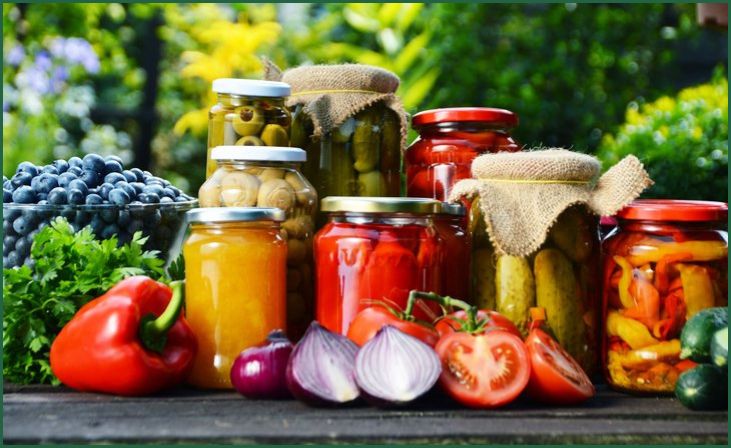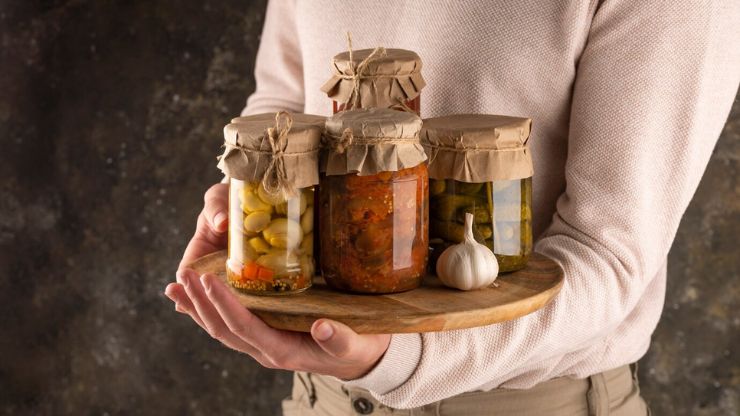Is My Ferment Safe to Eat? – Curious about the safety of your homemade ferment? Dive into our comprehensive guide on “Is My Ferment Safe to Eat?” to unravel the secrets behind fermentation safety. Whether you’re a seasoned fermenter or a novice enthusiast, understanding the signs of a safe ferment is crucial for your culinary adventures.
Table of Contents
ToggleIs My Ferment Safe to Eat?

Determining whether your ferment is safe to eat involves a combination of sensory observations, following proper fermentation practices, and understanding key indicators. Here’s a detailed guide to help you assess the safety of your ferment:
1. Observing Visual Cues:
- Consistent Texture: A well-fermented product often maintains a consistent texture. For instance, if you’re fermenting vegetables, they should remain firm and not turn mushy.
- Color: Be cautious of any unusual colors, especially dark or off-putting hues. While some changes are normal, vibrant and natural colors generally indicate a healthy ferment.
- Presence of Mold: Mold growth is a red flag. If you notice any fuzzy patches or mold, discard the entire batch.
Also Read: Salts for Fermenting Foods
2. Smelling for Aroma:
- Pleasant Odor: A good ferment exudes a pleasant, slightly tangy aroma. Foul or pungent smells may indicate spoilage or the presence of harmful bacteria.
- Offensive Odors: If you detect off-putting odors, it’s safer to err on the side of caution and refrain from consuming the ferment.
3. Tasting for Flavor:
- Balanced Flavor: Fermented foods should have a well-balanced and enjoyable taste. If the flavor is excessively sour, bitter, or unpleasant, the ferment may not be safe to eat.
- Unusual Tastes: Any unusual or unexpected flavors could be an indication of spoilage. Trust your taste buds and put safety first.
4. Monitoring pH Levels:
- pH Testing: Use pH strips to check the acidity level of your ferment. The optimal pH for most fermented foods falls within a specific range (usually below 4.6), inhibiting the growth of harmful bacteria.
- Research pH Requirements: Understand the pH requirements for the specific type of ferment you are working with and ensure it aligns with safety guidelines.
5. Following Proper Fermentation Practices:
- Hygiene: Maintain a clean environment, sanitize equipment, and wash your hands thoroughly before handling fermented foods.
- Use Quality Ingredients: Start with fresh, high-quality ingredients to reduce the risk of contamination.
6. Trusting Your Intuition:
- Instincts Matter: If something seems off, trust your instincts. Human senses are powerful indicators of food safety.
- When in Doubt, Throw it Out: If there’s any uncertainty about the safety of your ferment, it’s better to discard it to prevent potential health risks.
Also Read: Sterilize your Fermenting Jars
By combining these observations and practices, you can confidently determine whether your ferment is safe to eat. Regularly educate yourself on specific fermentation methods and consult reputable sources to ensure you’re following the best practices for each type of ferment you undertake.
Don't just scroll, subscribe!
BuzzTrail's unique web-stories are the cure for boredom you've been waiting for.
Common Mistakes and Risks

Avoiding common mistakes and understanding potential risks is crucial for ensuring the safety of your fermented foods. Here’s a detailed guide to help you navigate through the common pitfalls associated with fermentation:
1. Cross-Contamination:
- Proper Sanitization: Ensure all utensils, containers, and tools used in the fermentation process are thoroughly cleaned and sanitized.
- Separation of Batches: Keep different fermenting batches separate to prevent cross-contamination of unwanted microorganisms.
2. Over-Fermentation:
- Monitor Fermentation Time: Over-fermenting can lead to undesirable changes in texture and flavor. Follow recommended fermentation times specified in recipes.
- Regular Checks: Periodically taste and observe your ferment to ensure it doesn’t go beyond the desired level of fermentation.
3. Under-Fermentation:
- Follow Recipe Guidelines: Inadequate fermentation may result from not following recommended guidelines. Ensure you understand and adhere to the specified fermentation duration for your chosen recipe.
- Temperature Considerations: Factors such as ambient temperature can influence fermentation. Warmer temperatures generally accelerate the process, while cooler temperatures may slow it down.
4. Using Contaminated Equipment:
- Thorough Cleaning: Regularly clean and sanitize all equipment, including jars, lids, and utensils, to prevent the introduction of harmful bacteria.
- Proper Storage: Store equipment in a clean and dry environment to avoid the growth of mold and other contaminants.
5. Inadequate Salt or Brine Concentration:
- Follow Recipe Ratios: The salt or brine concentration in a ferment is crucial for creating an environment conducive to beneficial microorganisms. Follow the recommended ratios in your recipes.
- Taste Testing: Periodically taste the brine to ensure it maintains the right balance of saltiness.
6. Lack of Temperature Control:
- Ideal Temperature Range: Fermentation is sensitive to temperature. Aim for the recommended temperature range specified in your recipe for optimal results.
- Avoid Extreme Conditions: Keep ferments away from direct sunlight or extreme temperatures, as these can affect the fermentation process.
7. Inadequate Seal or Fermentation Vessel:
- Use Airtight Containers: Ensure your fermentation vessel provides an airtight seal to create an anaerobic environment for fermentation.
- Choose the Right Vessel: Select vessels appropriate for the type of ferment you are undertaking, considering factors like size, material, and shape.
Also Read: Can You Ferment Different Foods in the Same Room?
By being mindful of these common mistakes and risks, you can significantly enhance the safety and success of your fermentation endeavors. Regularly educate yourself, follow established guidelines, and don’t hesitate to seek advice from experienced fermenters or reliable sources in the field.
Conclusion
Embarking on the journey of fermenting your own food is exciting, but safety is paramount. By grasping the fundamentals explored in “Is My Ferment Safe to Eat?” you can savor the flavors of fermentation with confidence. Cultivate a keen eye for the signs of safety, adhere to best practices, and relish in the joy of creating delicious, risk-free ferments at home.
FAQs
Is there a surefire way to tell if my ferment is safe?
Is there a surefire way to tell if my ferment is safe?
Yes, there are several indicators. Look for a pleasant aroma, consistent texture, and absence of off-putting colors. Always trust your senses and follow tested recipes.
What common mistakes should I avoid to ensure safety?
What common mistakes should I avoid to ensure safety?
Avoid cross-contamination, use proper equipment, and maintain hygiene. Over or under-fermenting can also pose risks. Follow recommended guidelines and trust the process.

